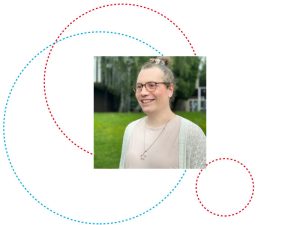Since 2015, 11 February has stood as the International Day of Women and Girls in Science – an initiative that aims to encourage gender equality in science, technology, engineering and mathematics (STEM) subjects. At SnT, we have so many inspiring women who are shaping the technologies of the future – one of which is Elona Dupont, a doctoral researcher within the Computer Vision, Imaging and Machine Intelligence (CVi2) research group. Having been a teacher for 16 years, she took the inspiring step three years ago to venture back to the other side of the classroom. She took on a Master’s degree at the University of Luxembourg in 2019, and began her Ph.D. in July 2021 at SnT. We spoke to Dupont to explore her previous career, research interests and role models.
Elona, could you share with us the subject of your Ph.D.?
Of course! I started my Ph.D. last year at SnT and it’s all about computer vision, in collaboration with Artec 3D – they make handheld 3D scanners. My Ph.D. is exploring how to improve the quality of data acquired by the scanners, so that engineers can use it more efficiently. I’m working on this through ‘reverse engineering’ – essentially it involves deducing the design intent of an object from its scan.
Tell us about your career before SnT, and why you decided to change careers?
I used to be a teacher in international schools, teaching children between the ages of 12-18 in the fields of mathematics, physics and computer science – my original degree many years ago was in physics. I got to travel the world, teaching in schools in six very different countries – Mexico, China, India, Germany, Japan and Guatemala. The human aspect of this job was so rewarding, but teaching stays relatively the same every year – it’s very static. In research – particularly in computer science – it can be quite the opposite, it’s a dynamic field that reinvents itself every few years. Teaching was a great experience, but I needed something that was going to give me a different challenge.
Do you have any long-term goals you’d like to accomplish in this area of research?
To finish my Ph.D. would be really the first important goal! After, we’ll see what comes my way. Having just started on this road, I’m not sure yet about whether I’d like to stay in academia or go into industry. It’s one of the reasons why I’m with SnT – it’s an institution that allows you to experience the best of both worlds and really get a feel for what each might be like to pursue as a career in the future: it’s exciting!
Do you have any female role models that inspire your work?
In the field of computer science and physics, there have been women working in these areas throughout history – but sadly they’re not well known as their contributions have not been recorded. It’s difficult to find many in this respect. However, it’s really great that within the CVi2 research group we have a very high ratio of women to men. I would consider each and every one of them to be role models to me, because they all bring such valuable insights and they have had to work hard to get where they are. They’re very talented individuals! Having Prof. Djamila Aouada as a leader is also one of the reasons why I wanted to do my Ph.D. here. During my Master’s degree I had a class taught by Djamila, and I found her way of thinking and how she structured the subject very appealing.
What do you think needs to be done to encourage more girls and women to pursue a career in STEM?
Unfortunately, I wish I had a simple answer – it’s something we discuss in our group often. There are things that can be done in the short- and long-term – but ‘traditional’ binary gender roles and society may continue to limit the access of women in certain professions. Looking at the field of computer science, the vast majority of people in key positions in the field are cis-men, things are getting better but there’s a long way to go.
